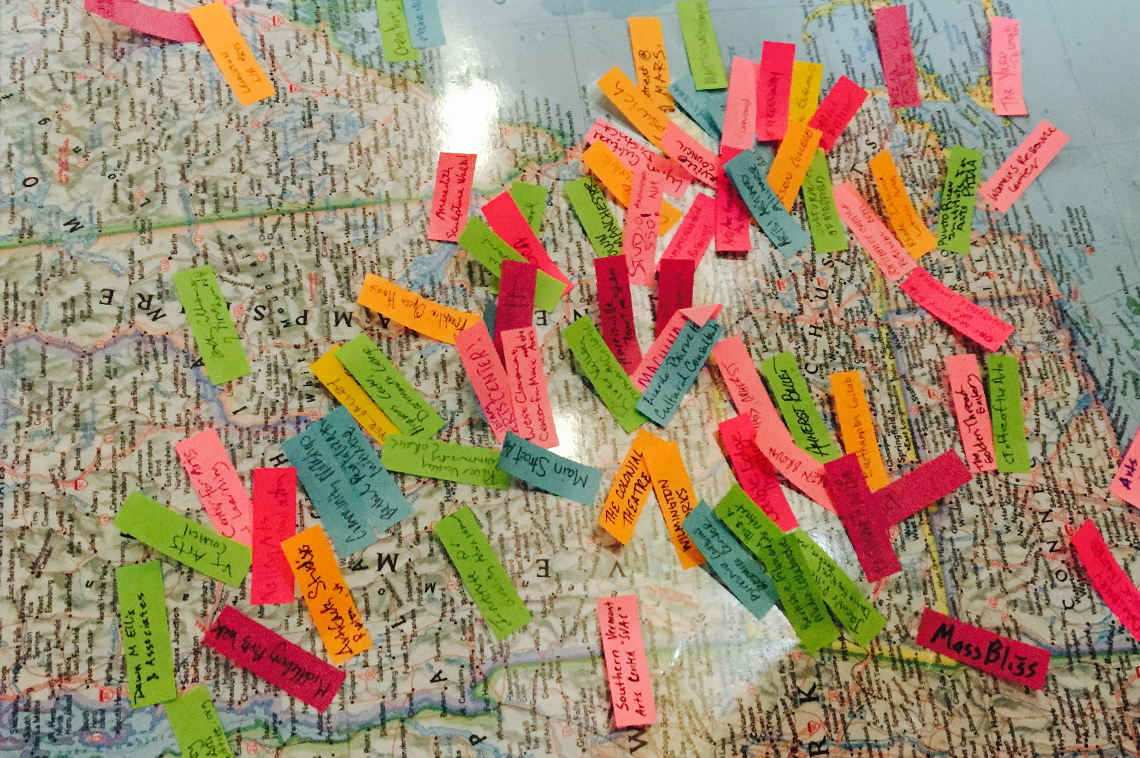
The sunny patio of Twelve Pine market in Peterborough, NH is not a bad spot to sit and reflect on this year’s Creative Community Exchange (CCX). Peterborough, after all, was the original inspiration for Our Town – both the Thornton Wilder play and the National Endowment for the Art’s creative placemaking grant program that I had the pleasure of managing in its early years. How could I not pay my respects as I passed by en route back to the Manchester airport!
Planned and supported annually by the New England Foundation for the Arts (NEFA) and its affiliates, CCX is “a peer-to-peer exchange of the strategies used in successful creative economy initiatives around New England. CCX professional development workshops are for New England leaders who are engaged in creative economy and creative placemaking projects that leverage their local creative sector for the revitalization and growth of their broader community.” This year’s event was held June 2-3 in the nearby college town of Keene, NH. With a population of roughly 23,000 residents and 5,000 students who attend Keene State College, Keene is the only official “city” in the Monadnock Region, which is otherwise dotted with picturesque towns, farms, woods, streams, and ponds.
Settled in 1736, Keene has a history common to many communities throughout New England. After a strong manufacturing era in the 19th Century, the town’s sawmills, gristmills, and tanneries eventually closed and its downtown declined as a result. It wasn’t until the 1980’s that local business and community leaders came together to revitalize historic buildings along Main Street and jumpstart the local economy through community forums and concerted public-private partnership efforts.
The CCX conference kicked off with a discussion between Keene Mayor Kendall W. Lane and Keene State College President Dr. Anne Huot, who spoke to this history and to the true partnership and collaboration they have in promoting and supporting quality of life in Keene today. In a welcome twist from typical conference venues, CCX sessions took place all over campus and town, at historic sites ranging from the Keene Public Library and Keene City Hall, to the Keene State College Student Center and Alumni Center.
It was a treat to learn from so many artists, practitioners, and volunteers who are working at the intersection of the arts and community revitalization. Among the workshops that I attended, strong themes emerged with regard to the role that food – culture and heritage broadly defined – can play in efforts not only to integrate immigrant populations into local communities, but also to create pathways for new Americans to start businesses and contribute to their local economy. Nibble: Empowering Immigrant Culinary Entrepreneurs in Somerville, Massachusetts, led by the Somerville Arts Council, and the Concord Multicultural Festival in Concord, New Hampshire, led by the all-volunteer Greater Concord Area Taskforce on Racism and Intolerance, were two such projects.
My CCX attendance, however, was prompted by an invitation that NEFA extended last fall to funders who are thinking about the evaluation and impacts of this type of work. At the close of day one, I joined Meri Jenkins of the Massachusetts Cultural Council, and Jane Preston, Director of Programs at NEFA, for an interactive panel entitled “Funder Perspectives on How to Measure and Communicate Success.” We discussed the difference between creative economy and creative placemaking outcomes, during which I introduced the Community Development Matrix that ArtPlace is using to identify and organize the many sectors within which arts and cultural projects can have an impact. One audience member questioned the notion of ‘placemaking’ as a term, citing that many arts organizations work in “places that are already made,” which prompted a lively dialogue about the fact that places are changing all the time -- whether through intentional interventions or natural shifts in population, markets, or local leadership. As a group we also wrestled with the tension between funder-defined versus grantee-defined measurement; some grantees want funders to lead the way and establish measurement requirements for grantees to use, whereas others resist standards or measurement systems that often have little relevance to the goals and outcomes that are most relevant to their community stakeholders.
If this is a topic that interests you, take a look at the Center for Effective Philanthropy’s recent report Assessing to Achieve High Performance: What Nonprofits are Doing and How Foundations Can Help, and/or feel free to weigh in in the comments section below.
Many thanks to NEFA and its affiliates for catalyzing a great exchange, and for inviting ArtPlace to such a beautiful part of the country!





